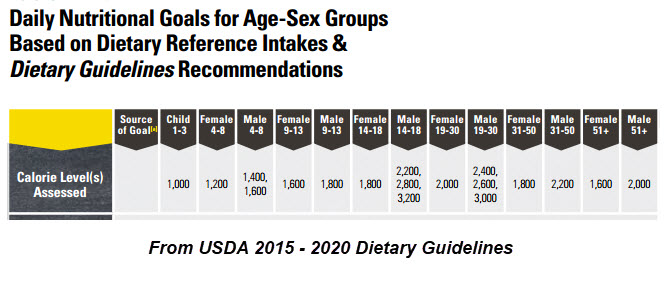Calorie Restriction
As people age, their bodies go through a lot of changes.
From a decrease in muscle mass to a decrease in bone density, aging can lead to a variety of health issues. One way to combat these issues is by engaging in calorie restriction.
Calorie restriction is the practice of cutting back on calories in order to maintain a healthy weight and reduce the risk of age-related diseases. This practice can be especially beneficial for those over the age of 50, as it has been linked to a number of health benefits.
Calorie restriction has been studied extensively over the years, and the results are promising. Research suggests that reducing calorie intake can help improve overall health and reduce the risk of age-related diseases. Studies have found that calorie restriction can reduce inflammation and oxidative stress, both of which can play a role in the development of age-related diseases.
In addition to reducing inflammation and oxidative stress, calorie restriction has been found to increase lifespan in animals. While the effects on humans have not been as extensively studied, it is believed that calorie restriction may have the same benefits in humans. This is because calorie restriction has been linked to improved metabolic health, which can help reduce the risk of age-related diseases.
What is Strategic Nutrition?
Strategic nutrition is an approach that takes into account an individual’s specific needs and health goals.
It is a personalized approach to nutrition that is tailored to the individual, taking into account age-related deficiencies, medical conditions, lifestyle, and goals. Strategic nutrition is based on the idea that food can be used to optimize health and performance.
Dr. Gruber Develops Strategic Nutrition Treatment Plan
When it comes to strategic nutrition, one of the most important steps is to develop a personalized treatment plan. Dr. Gruber specializes in developing tailored nutrition plans for his patients. He takes into account an individual’s age, medical history, lifestyle, and goals to create an individualized plan that is tailored to their needs.
When developing a treatment plan, Dr. Gruber will start by evaluating an individual’s current diet and lifestyle.
He will then assess any age-related deficiencies and medical conditions. Based on this assessment, he will develop a personalized nutrition plan that includes a variety of whole foods and nutriceuticals to target energy metabolism and provide the nutrients needed for optimal health.
Key is to Target Energy Metabolism
When it comes to strategic nutrition, one of the key goals is to target energy metabolism. This means providing the body with the nutrients it needs to produce energy and optimize performance. Dr. Gruber recommends a variety of whole foods and nutriceuticals, such as fruits, vegetables, legumes, nuts, and seeds, to provide the body with the fuel it needs to function at its best.
In addition to whole foods, Dr. Gruber also recommends using specific supplements to help target energy metabolism and provide the nutrients needed for optimal health. Supplements, such as omega-3 fatty acids, probiotics, vitamins, minerals, and herbs, can be used to target specific deficiencies and health goals.
Personalized, Evidence-Based Approach
Dr. Gruber takes a personalized, evidence-based approach to nutrition. He believes that the best way to optimize health and performance is to tailor a nutrition plan to the individual. Each plan is based on the latest evidence and research, and is tailored to the individual’s age, medical history, lifestyle, and goals.
Dr. Gruber also recommends that his patients periodically reassess their nutrition plan. This ensures that the plan is up-to-date and that any deficiencies or health goals are being met. Reassessment also helps to ensure that an individual is getting the most out of their nutrition plan and that their health and performance goals are being met.
Diet Management: How to Achieve a Balanced and Healthy Diet
Eating a healthy and balanced diet is one of the most important elements to achieving optimal health and wellness.
With a balanced diet, you can maintain a healthy weight, boost your immune system, and improve your overall quality of life. However, creating and adhering to a balanced diet can be a challenge. Below are some keys to help you manage your diet, including increasing alkalizing foods, avoiding food sensitivities, limiting inflammatory foods, and understanding macronutrients and micronutrients.
Increasing Alkalizing Foods
To get the most out of your diet, it is important to focus on increasing alkalizing foods. Alkaline foods are those that are rich in minerals such as calcium, magnesium, and potassium. These foods help to balance the pH in your body, and can help to reduce acidity and inflammation.
Examples of alkalizing foods include dark leafy greens, vegetables, fruits, nuts, and seeds. Additionally, it is important to drink plenty of water throughout the day to help keep the body hydrated and maintain its alkalinity.
Avoiding Food Sensitivities
Another important part of diet management is avoiding food sensitivities. Food sensitivities can cause a variety of issues, including digestive issues, headaches, and skin rashes. To avoid these sensitivities, it is important to pay attention to the foods you’re eating and identify any that may be causing your body to react negatively.
Common foods that can cause sensitivities include dairy, wheat, soy, and eggs. If you think you may have a food sensitivity, it is best to get tested.
Limiting Inflammatory Foods
Limiting inflammatory foods is also a key part of diet management. Inflammatory foods can increase inflammation in the body, which can lead to a variety of health problems, including heart disease, arthritis, and diabetes.
To reduce inflammation, it is important to limit processed foods, refined sugars, and trans fats. Additionally, it is important to increase your intake of foods rich in anti-inflammatory properties, such as fatty fish, leafy greens, and nuts.
Understanding Macronutrients and Micronutrients
It is also important to understand the difference between macronutrients and micronutrients when managing your diet. Macronutrients are nutrients that provide energy and are needed in larger quantities, such as organic carbohydrates, fats, and proteins.
Micronutrients, on the other hand, are essential vitamins and minerals that are needed in smaller amounts. When following a balanced diet, it is important to ensure you are getting enough of both macronutrients and micronutrients.
Achieving a balanced and healthy diet is essential for optimal health and wellness.
To manage your diet, it is important to focus on increasing alkalizing foods, avoiding food sensitivities, limiting inflammatory foods, understanding macronutrients and micronutrients, and seeking professional guidance if needed. With these tips and advice, you can achieve a balanced and healthy diet that will benefit your overall health and wellbeing.
Eating Patterns: Time Restricted Eating and Intermittent Fasting
Eating patterns refer to the times and frequencies of meals eaten throughout the day.
Eating patterns are an important part of a healthy lifestyle. Time restricted eating and intermittent fasting are two popular eating patterns that have become increasingly popular in recent years. Both have many beneficial health benefits and help to regulate the body’s innate 24-hour circadian system.
Time restricted eating (TRE)
Time restricted eating (TRE) is an eating pattern that limits the amount of time an individual eats to a certain window throughout the day. This eating pattern has been found to be beneficial for weight loss, as well as for improving metabolic health and reducing the risk of chronic diseases.
TRE typically involves eating meals within a 10-12 hour window each day, with no eating or snacking outside of this window.
Studies have found that limiting the time window throughout the day that one eats can lead to an improved production of hormones and enzymes, a decrease in appetite, and an improved basal metabolic rate.
Intermittent fasting (IF)
Intermittent fasting (IF) is another popular eating pattern. It is an eating pattern that cycles between periods of eating and fasting. The most common approach to IF is the 16:8 method, which involves limiting eating to an 8 hour window each day and fasting for the other 16 hours.
This type of eating pattern has been found to be beneficial for weight loss, improving metabolic health, and reducing the risk of chronic diseases.
Studies have also found that intermittent fasting can help to increase the body’s sensitivity to insulin, which can help to regulate blood sugar levels and reduce the risk of type 2 diabetes.
Is Intermittent Fasting or Time Restricted Eating Better?
Both time restricted eating and intermittent fasting can help to regulate the body’s innate 24-hour circadian system. The circadian system is the body’s internal clock, which helps to regulate the sleep-wake cycle and other bodily functions.
Studies have found that following these eating patterns can help to improve the body’s natural circadian rhythm, which can improve the quality of sleep and reduce fatigue.
In addition to the beneficial effects of time restricted eating and intermittent fasting on the body’s circadian system, there are many other beneficial health benefits associated with these eating patterns.
Studies have found that following these eating patterns can help to improve body composition, reduce inflammation, and improve overall health. They can also help to reduce the risk of chronic diseases, such as heart disease, diabetes, and cancer.
Regulate sugar levels with Intermittent Fasting or Time Restricted Eating
Another benefit of these eating patterns is that they can help to regulate blood sugar levels. This is important for individuals with diabetes, as well as those who want to prevent the onset of diabetes.
Eating meals and snacks that are high on the glycemic index can cause blood sugar levels to spike, which can increase the risk of type 2 diabetes. Following an eating pattern like time restricted eating or intermittent fasting can help to regulate blood sugar levels and reduce the risk of type 2 diabetes.
Overall, time restricted eating and intermittent fasting are two popular eating patterns that can have many beneficial health benefits.
They can help to regulate the body’s innate 24-hour circadian system, improve body composition, reduce inflammation, and reduce the risk of chronic diseases. They can also help to regulate blood sugar levels and reduce the risk of type 2 diabetes. For those looking to improve their overall health and well-being, time restricted eating and intermittent fasting may be a great option.
June 2020 Newsletter

What is self-regulation? Simply, it is controlling your appetite and emotions, and regulating what you do. When you are at your best with self-regulation, you exercise discipline and self-control with your health habits, emotions, and impulses, while allowing yourself spontaneous pleasures and staying reasonably flexible in your daily routines.
Consider these questions as you reflect on your strength of self-regulation:
- How does self-regulation play a role in your greatest successes in life?
- What areas of your life are best regulated?
- How do you control your unwanted impulses?
- What techniques or strategies do you use?
- Which areas of life or what circumstances are most challenging for you in terms of regulating emotions and impulses?
- What thoughts and feelings do you have about yourself when you are not self-regulating effectively?
- How do other people (friends, family, co-workers, or acquaintances) respond to your self-regulation?
- What areas of your life would be improved if you applied greater self-regulation?
If you need self-regulation coaching, give me a call.
With Gratitude, Dr. Gary
If you would like to schedule a phone call with Dr. Gary please CLICK HERE
Healthy Gut, Healthy Body: What You Need to Know
The human body is home to over 100 trillion microorganisms, the majority of which are found in the gastrointestinal tract ("gut"). Taken as a whole, this community of microorganisms, their genes and the functions they encode, are referred to as the microbiome.
During the past two decades, research has revealed significant associations between the gut microbiome and conditions such as cardiovascular disease, obesity, diabetes, inflammatory bowel disease (IBD), irritable bowel syndrome (IBS), Crohn's Disease, psoriasis, and cancer. Recent research is also striving to understand the correlation between the microbiome and Alzheimer's Disease, autoimmune conditions, and various inflammatory responses. Because of the highly individualized make-up of each person's microbiome, researchers are exploring how nutrition and other factors influence the gut microbiome and how imbalances can be corrected with lifestyle interventions.
Disruption to the delicate balance in the microbiome can be caused by many factors, such as
- age (microbiome composition changes throughout the lifespan)
- dietary habits and quality of our food
- history of illness, existing chronic health conditions or autoimmune conditions
- imbalance in stomach acid production
- frequency of use of certain prescription medications including antibiotics
- lifestyle factors: smoking (including e-cigarettes), use of alcohol or recreational drugs
- high stress level
- exposure to toxins in the environment (e.g., work conditions, atmosphere)
While research reveals a link between lifestyle factors, the microbiome, and the health of our system, there is a great deal more to be discovered. For example, scientists want to better identify which bacteria in the microbiome are most implicated in specific diseases. They also want to understand whether an imbalance is the cause for the disease, or the result of the disease, or both.
One thing that is clear: Failure to take care of ourselves disrupts the microbiome, which then creates a cycle of imbalance that manifests in symptoms of illness (in the gut and in other organs). Some of these include:
- poor absorption of nutrients (organic acids and comprehensive digestive analysis)
- bad breath (halitosis)
- recurrent upset stomach, nausea, or bloating
- persistent constipation or diarrhea
- difficulty urinating
- vaginal or anal itching or discharge
- rash or redness
- fatigue
- trouble concentrating
- changes in mood
Unless the microbiome is brought back into balance, symptoms of illness will persist and quality of life diminishes. Even if you have been ill, or not kind to your body with a healthy lifestyle, there is good news: Healthy dietary changes and nutritional supplements can rebalance the microbiome, strengthening immunity and reducing inflammation throughout the body. Here are a few tips to help rebalance your gut:
Eat a whole foods diet. In particular, the high-fiber, nutrient-rich foods in the Mediterranean Diet has been shown to protect the integrity of the gut microbiome.
Eat more fermented foods. Fermentation is a process for preserving food that can improve digestibility. Fermented foods contain bacteria that are an important source of nutrients and health-promoting bacteria for the gut.
Take a prebiotic/probiotic supplement. Prebiotics are a type of fiber that the human body cannot digest. They serve as fuel for probiotics, which are tiny living microorganisms, (bacteria and yeast). Both prebiotics and probiotics support the body in building and maintaining a healthy gut. To ensure the right combination and proper absorption, prebiotic - probiotic regiment needs to be prescribed by your physician.
Heart Strengths Therapy. (CLICK HERE) Heart-Strength Therapy (HST) is a process that integrates HeartMath technology tools with positive character strengths. As an evidence-based emotional management tool HeartMath has been shown to be effective both scientifically and clinically. HST BUILDS RESILIENCE AND AGILITY. By combining Heartmath tools with positive character strengths, HST is a personalized and very powerful utilization of the HeartMath tools. This approach makes HST a valuable lifestyle tool for health, business, relationships, family, community, and all social endeavors.
If you've had ongoing problems with gastrointestinal symptoms, it's time to schedule a consultation with Dr. Gary who will provide you with a personalized approach to rebalancing your microbiome.
Radio Interview

'Go Nuts' for the Health Benefits of Tree Nuts
From breakfast to dinner to snacks, tree nuts are popular across the globe. They can be eaten whole (fresh or roasted), in spreads and butters, used as a source for gluten-free flour, and blended into smoothies or dessert recipes. Nut oils are used for cooking and are even found in skincare and haircare products. But what is a nut? And what makes nuts so good for our health?
Tree nuts are dry fruits with one seed that becomes hard at maturity. With the exception of chestnuts, which have a different nutrient profile and higher level of starch, the most popular edible tree nuts are almonds, hazelnuts, walnuts, pistachios, and cashews. Other favorites include pecans, macadamia, and Brazil nuts. And then there's the peanut: even though it grows from the ground rather than on a tree and is technically a legume, its nutrient profile is considerably similar to tree nuts.
What Makes Nuts Good for Health?
Nuts are low in carbohydrates and high in vegetable protein, fiber, magnesium, antioxidants, vitamins, and minerals. They are low in saturated fat and a rich source of 'healthy' fats, mono- and polyunsaturated fatty acids (MUFAs and PUFAs). Studies show that nuts . . .
- protect the heart, helping reduce risk for cardiovascular disease
- support cellular defenses against free radicals that damage cells and are implicated in chronic disease
- balance insulin levels, which relates to lower risk for Type 2 Diabetes
- support healthy brain tissue
- reduce inflammation
- help maintain healthy cholesterol level
- help maintain a healthy body weight
Epidemiological studies show regular consumption of nuts is linked to lower risk of all-cause mortality. High nut intake is associated with better overall cognition at older ages. In particular, walnuts are high in an essential fatty acid, named Omega-3 fatty acid, important to brain function. Pistachio nuts have been associated with significant gamma brain wave activity, critical for cognitive processing, memory, learning and perception.
It's clear that tree nuts make an indispensable contribution to a well-balanced diet for omnivores and vegetarians alike. So, find a nut you love and make it part of your daily diet.
N-acetyl glucosamine (N-AcG): A Possible New Therapy for Supporting Our Gut
N-acetyl glucosamine (N-AcG) comes from the outer shell of shellfish. Studies indicate it might help protect the lining of the stomach and intestines. N-AcG seems to be an energy source for friendly organisms within the microbiota, which may account for its protective benefits to the intestinal tract.
There is early evidence that taking N-AcG by mouth or rectally might decrease symptoms of Irritable Bowel Syndrome, Crohn's disease, or ulcerative colitis, conditions that are known to have deterioration of the gut microbiota. While focusing on reestablishing a healthy microbiota is a priority, sometimes we also need therapies and treatments to help with flared symptoms.
Do not confuse N-AcG with the forms of glucosamine that are used in holistic therapies for osteoarthritis; the supplements are very different. For osteoarthritis, glucosamine sulfate is used. N-AcG, since it is derived from shellfish, carries the risk of causing a reaction in individuals who are allergic to shellfish. Also, N-AcG may raise insulin levels, interact with prescription medications, and is not recommended for pregnant or nursing women.
The appropriate dose of N-AcG glucosamine depends on several factors, such as age, health issues, current medications, and many other factors. If you are interested in this supplement, contact Dr. Gary for guidance about the appropriateness of N-AcG for you.
Nuts for Nut Milks! How to Make any Variety
With endless varieties of nut milks lining the grocery shelves, you might wonder "Can I make my own nut milk at home?" Yes you can, and it's not as difficult as you might think. You can enhance this basic recipe, good for nearly any nut, by adding fresh berries, coconut, or blending varieties of nuts (Cashew-Almond Milk, for example). Start simple and when you're comfortable with the basic recipe, experiment with flavor.
Nut Milk Basics
- Buy raw unsalted nuts
- Soak the nuts overnight according to guidelines listed below (also see website listed in Resources)
- Drain and rinse the soaked nuts
- Blend the nuts with fresh, clean water (use a high quality blender)
- Strain the nut milk. For sustainability, use a piece of clean cotton cloth. It can be washed and reused hundreds of times.
- Sweeten with raw honey, molasses or stevia if desired
- Chill, drink, enjoy!
Helpful Tips
A blender is the best tool for this job, but a food processor works too. Nut milk from a blender is a bit creamier and sweeter.
After blending, straining the milk provides the best consistency for a drinkable nut milk.
Some folks prefer to leave their nut milk unstrained, especially those with high-powered blenders, but unstrained milk will separate more in the fridge and will need to be mixed again before serving. Unstrained milk is thicker and creamier than strained.
Another option, for those who prefer a thinner milk, is to add clean water to strained or even unstrained milk. Simply add clean water until the milk reaches your preferred consistency.
To make 2 cups of Cashew Nut Milk:
- 1 cup raw, unsalted cashews, or any raw nuts without skins
- 2 cups water
- Soaking water
Soak the nuts: Place the nuts in a medium glass bowl. Cover with water. Cover the bowl with a cloth and let sit overnight at room temperature or up to 2 days in the refrigerator. The nuts will plump as they absorb water and should feel a little squishy if you pinch them. The longer the nuts soak, the creamier the milk will be.
Drain and rinse the nuts: Drain the nuts through a fine-mesh strainer or colander, then rinse them thoroughly under cool running water. Place the nuts in a blender (or food processor) and add the 2 cups of water.
Blend on high speed: Pulse the blender a few times to break up the nuts, then blend continuously on high speed for 3 minutes. If using a food processor, process for 4 minutes total, pausing to scrape down the sides halfway through. The nuts should be broken down into a very fine meal, and the water should be white and opaque.
Strain out the nut meal: Line the fine-mesh strainer or colander with either an opened nut bag, 2 layers of cheesecloth or a piece of cotton and set over a measuring cup or bowl. Pour the nut mixture through the strainer. Gather the nut bag or cheesecloth around the nut meal and twist close. Squeeze and press with clean hands to extract as much nut milk as possible. You should get about 2 cups.
Refrigerate the nut milk: Store the nut milk in sealed containers in the refrigerator for up to 4 days. If it separates, just shake to recombine. Save the nut meal for another use such as in vegan lasagna, enchiladas, home-made ice cream, cookies and more!
Nut Soaking Guidelines by Hardness
Long-soak nuts (almonds, pistachios, and hazelnuts) need at least 8 hours.
Medium-soak nuts (pecans, walnuts, and Brazil nuts) are oilier and swell up quickly, so require less soaking time.
Short-soak nuts (cashews, macadamias, and pine nuts) have the highest fat content and require only 2 to 4 hours soaking. Do not soak these nuts for longer than 4 hours. Soaking them for extended periods of time breaks down their health-promoting oils.
Guiding Principles
Ketogenic Diet: Initiation for Adults in New Canaan CT
Recent research has demonstrated that the Ketogenic diet is very effective for treating several metabolic conditions.
These metabolic conditions include:
- Obesity
- Heart Disease
- Diabetes
- Neurodenegerative diseases - Alzheimer’s, Parkinson’s, Epilepsy, and Multiple Sclerosis
- Cancer
Before initiating the Ketogenic Diet, it is imperative that you have a discussion with your physician to determine if this diet/treatment is appropriate for you.
There are three phases of the Ketogenic Diet: preparation, implementation, and maintenance.
PHASE 1 of the Ketogenic Diet (2 weeks)
In this preparation phase you shift from a carbohydrate centric diet to more protein. In this phase the diet should be 50% protein (1 calorie = 4 grams), 30% fat (1 calorie = 9 grams), 20% carbohydrates (1 calorie = 4 grams). Depending upon your health you may need some liver/gallbladder support and nutrients during this phase. Note: If you are ready both physically and emotionally, you may jump directly to phase 2. Important: you must monitor your daily intake of calories and macronutrients (carbohydrates, protein, and fats). To monitor your intake it is recommended to use a smartphone or computer app such as “Carb Manager,” see https://www.carbmanager.com/. Use the USDA standard dietary guidelines (see below) to determine your daily caloric intake. Weight loss on the Ketogenic Diet will occur when your caloric intake is 30% less than the recommended levels (see below). Note that if your daily caloric intake falls below 1,000, your body will significantly slow down ALL metabolism as though you are starving. This may cause breakdown of muscle and other organs for additional sources of energy from protein. This will likely reverse ketosis.
PHASE 2 of the Ketogenic Diet
In this implementation phase you shift to 60% fat, 30% protein, 10% carbohydrates (“Modified Atkins Diet”). You maintain the same caloric intake as Phase 1 and throughout the Ketogenic Diet. In this phase you are shifting from glucose energy to ketone energy. The end result is ketosis. Ketosis is measured at minimum of 0.3mmol/L.
It is important to measure your blood ketone levels daily. I recommend first thing in the morning before any food or drink. Water is ok. For a good, cost effective measurement device see Keto Mojo.
Periodically you may not feel well during this phase, almost like a flu: but it is only temporary. It is usually due to deficiencies in micronutrients and water intake.
PHASE 3 of the Ketogenic Diet
This maintenance phase is very personal. The most important aspect of this phase is to find your comfort zone of macronutrients and exercise where you remain in ketosis. Important: more is not better. Stay above 0.3 mmol/L. When you know you have had too many carbohydrates and protein CHECK YOU BLOOD LEVELS for a few days as you correct your diet to stay on track.
Periodically you must check blood lipid levels as well as micronutrients such as sodium, magnesium, potassium, calcium, selenium, etc. There are several different labs that we recommend depending on the objective of the test. We use: Quest and Lab Partners, Genova Labs, and SpectraCell.
It is very important to monitor digestive health. If you experience bloating, gas, indigestion or reflux, abdominal pain, mood changes, headaches, skin rashes, and changes in bowel movements such as constipation or diarrhea, it is recommended to follow up quickly with a comprehensive digestive analysis.
‘Tis the Season for Joy and Vitamin D
The year-end holidays are a wonderful time to spend with family and friends.
But spending more time with people also means we are exposed to colds and flu. This year very high levels of influenza are expected. You can decrease your susceptibility to colds and flu by maintaining Vitamin D levels.
The easiest way to get Vitamin D is sunlight. Unfortunately, after September 20th (the autumnal equinox) the specific ultraviolet rays that we absorb to make Vitamin D from the sun do not penetrate the earth’s atmosphere above the 35th latitude (Atlanta, Georgia). This means that people who live in New England could stand outside naked all day and never absorb sunlight to make any vitamin D. Supplementation is the only solution.
The Basics About Vitamin D – Here’s What You Need to Know!
Vitamin D is one of the most essential vitamins for our bodies. Vitamins are substances which our bodies consume for energy production, growth, and proper bodily functions.
What Does Vitamin D Do for Me?
Vitamin D has a variety of different functions in our bodies. One of the primary purposes of vitamin D is to promote healthy bone growth. Vitamin D helps promote calcium absorption and maintain adequate levels of minerals such as phosphorous and calcium in our bones.
Vitamin D also helps control blood pressure and promotes skeletal, nervous, and muscular health.
Vitamin D when used in combination with Vitamin A acts like a hormone, instantly signaling the immune system to ramp-up against bacteria and viruses.
How Can I Get Vitamin D – And How Much Do I Really Need?
There are only three ways to get vitamin D, and it’s recommended that healthy adults consume at least 800 IU of vitamin D every day. In New England it is very appropriate for adults to consume 2,000 IU of Vitamin D.
- Through your skin – Vitamin D is often known as the “sunshine vitamin”, because our body naturally produces it when we are exposed to the sun. 15-30 minutes of midday sun exposure in the spring through the fall will provide you with 10,000 IU of vitamin D, which is more than enough for your daily requirements.
- In your diet – Actually, there are very few sources of food that are naturally high in vitamin D. Salmon, tuna, and other oily fish have some vitamin D, as do foods like liver and egg yolks. Dairy products like yogurt and milk usually don’t naturally have vitamin D, but they are often “fortified” with vitamin D supplements.
- Through vitamin supplements – Since it is difficult to get enough vitamin D in your daily diet and can’t get it through sun exposure, supplements are a good choice. Family and Environmental Medicine carries a 2,000 iu capsule in its online pharmacy.
What Are The Signs Of Vitamin D Deficiency?
If you are elderly, obese, get little sun exposure, or have certain conditions like inflammatory bowel diseases, you may be at risk of vitamin D deficiency. Here are the most common symptoms:
- A weakened immune system
- Fatigue/tiredness
- Bone and back pain
- Depression
- Slow wound healing
- Bone/hair loss
- Muscular pain
If you’re experiencing one or more of these symptoms, it is critical to assess your Vitamin D blood levels. We recommend that our patients have their Vitamin D blood levels checked at least annually.
How Important is it to Address Vitamin D Deficiency?
A chronic deficiency in Vitamin causes rickets (a softening of bone tissue) and is also associated with chronic conditions such as:
- Osteoporosis
- Multiple Sclerosis
- Epilepsy
- Cancer
- Heart Disease
- Diabetes
- High Blood Pressure
Bromelain: The Inflammation Enzyme
Bromelain is an all-natural protein extract that’s derived from the stems of pineapples.
This powerful enzyme has been used in alternative medicine for centuries – starting with native tribespeople in South and Central America.

The primary component of bromelain is a sulfhydryl proteolytic fraction, though it also contains other active ingredients such as several protease inhibitors and acid phosphatase.
Together, these ingredients create a powerful proteolytic effect – that is, they work together to break down proteins into smaller peptides and amino acids. This proteolytic effect has many treatment applications for pain, inflammation, and improving the immune system.
What Does Bromelain Do?
Bromelain is a powerful natural substance – and it’s readily bioavailable to humans, and exhibits powerful anti-inflammatory effects, as well as analgesic pain-relieving properties. A study performed on rats in 2005 indicated that bromelain was one of the most powerful natural anti-inflammatory drugs available – perhaps stronger than pharmaceutical medicines such as Prednisone that work by inhibiting prostaglandins.
In addition to its pain-relieving and anti-inflammatory effects, bromelain is thought to have an effect on many other parts of the body. According to a study performed in 2001, bromelain induces a higher level of T-cells and B-cells in mice – and has been confirmed as a powerful immunomodulatory agent that can help boost the immune system.
Bromelain has also been certified for medicinal use – commercially available bromelain compounds are used by medical professionals for the debridement of wounds, due to bromelain’s powerful ability to denature proteins.
What Is Bromelain Used For?
In alternative research, bromelain compounds have been shown to have a wide variety of uses. From treatment of diseases and chronic health issues, to its use as a supplement for everyday health, bromelain has a huge variety of uses.
- Potentiation Of Antibiotics – A study conducted in 2016 identified bromelain as a powerful potentiator of antibiotics. Patients who were administered a high dose of bromelain alongside antibiotics had a much higher ability to fight back against infection. This makes bromelain a fantastic treatment for infections such as bronchitis, sinusitis, and pneumonia.
- Treatment Of Musculoskeletal Injuries – The powerful anti-inflammatory and analgesic power of bromelain makes it a powerful treatment for athletic injuries caused by trauma, or for postoperative muscular recovery after surgery.
- Digestive Aid – Enzymes such as bromelain have been proven to aid in digestive health. By assisting in the breakdown of proteins, bromelain encourages absorption of critical nutrients, and a healthier digestive system.
- Cardiovascular Health – Bromelain has well-documented anti-clotting properties, which can help prevent the buildup of potentially dangerous blood clots, and encourage a higher level of cardiovascular health.
- Arthritis Treatment – The powerful anti-inflammatory effects of bromelain make it a fantastic choice for arthritis treatment. And because it’s all-natural, there are none of the nasty side-effects that are so common with corticosteroid arthritis treatments like Prednisone.
- Cancer Treatment – Bromelain has been recognized for chemopreventive capabilities, and is an effective anticancer agent which can help reduce the size of tumors. A study performed on 4 human subjects showed that bromelain attacks a protein known as “MUC1” – which heavily impaired the ability of cancer cells to survive and reproduce. In animals studies Bromelain has been shown to reduce and inhibit metastasis.
Who Should Take Bromelain Supplements?
Bromelain is a powerful, all-natural supplement – and in reasonable doses, it’s safe for everyone to use. Whether or not you have a chronic condition such as those listed above, bromelain is a safe supplement that can aid in digestion, encourage better cardiovascular health, and reduce pain and inflammation.
Happy Gut, Healthy Body
The foundation of good health starts with a healthy, happy digestive system.
The gut is where many of the most important processes happen in the body such as eliminating toxins, absorbing nutrients, filtering out viruses and bacteria, and supporting the immune system. When our gut is in optimal shape, our body tends to be healthier overall. Below are five areas everyone can address in order to help improve their gut function. However, keep in mind that each of us has an individual picture of health. That is why we recommend that you consult with us about your own digestive wellness so we may help you design and implement a comprehensive health plan.
Probiotics
Probiotics are beneficial strains of bacteria that occur naturally in the body. They help break down food, aid in digestion, make some nutrients more bio-available, and combat the overgrowth of unhealthy bacteria. The use of pharmaceuticals, antibiotics, and chronic stress all compromise health levels of beneficial bacteria, making it harder for them to do their job. Many of us need daily supplementation with a high quality probiotic. It is important to maintain the quality of your supplement by keeping it refrigerated. Also, help feed good bacteria with fermented foods (sauerkraut) and special soluble fibers (inulin and arabinogalactans).
Food Sensitivities
To immediately improve your gut health you should eliminate from your diet foods to which you have allergies and sensitivities. Food sensitivities are not as obvious as anaphylactic food reactions - such as hives, inflammation, difficulty breathing or rashes. That deals with a different part of the immune system. Food sensitivities are foods that you might eat on a regular basis to which your body has developed a chronic low-grade intolerance. If the problem is left untreated, your body can become over-reactive to many kinds of foods, even some you don't eat regularly. The four most common foods are wheat, dairy, soy, and eggs. While the elimination diet is the standard for food sensitivities, there are affordable laboratory tests that we regularly order for our patients that make the process of elimination simple and effective.
Elimination
One of the most critical parts of a healthy gut is good elimination. There is quite a bit of evidence about your overall state of health by the number of bowel movements you have a day as well as the quality. Soluble and insoluble fiber will help with elimination, as well as exercise and stretching. It is important to have the right balance in your transit time between when you eat and when you have a bowel movement. If you are constipated, it means that toxins and body waste are sitting in your intestines. You run the risk of reabsorbing some of the toxins and damaging the intestinal barrier (click here: The Intestinal Barrier). If your transit time is too quick, your body doesn't have time to absorb the nutrition from your food.
Hydration
An important aspect to elimination and a healthy gut is proper hydration. We need water to flush toxins, absorb nutrients through osmosis, and help prevent the gut from becoming constipated. Make sure to include clean sources of water in your daily routine. Staying hydrated throughout the day is more beneficial to your body than hydrating with several glasses of water all at once. While flavored beverages can be appealing, added sugars, caffeine, dyes, and other chemicals will negate any positive effects. Water is necessary in and of itself, so make sure to get enough pure, clean water in your diet as necessary.
Stress Reduction
Our gut is often thought of as our emotional center. We get butterflies in our stomach, or nausea with stage fright, or we may have a gut feeling. However, chronic negative feelings like anger, guilt, and anxiety can have a negative impact on our gut health. It is important to be mindful of the amount of chronic stress you have in your life. Conscious breathing or taking deep refreshing breaths several times during the day can help release any stored up tension in your gut. To help patients with chronic stress we are Certified in HeartMath (click here: HeartMath for Emotional Management). The unique and effective A.R.E. Program was designed to help patients manage and eliminate the physiological effects of chronic stress.
References
Gaby, A. (2011). Nutritional medicine. Concord, N.H: Fritz Perlberg Publishing.
Murray, M. T. (1997). Chronic candidiasis: Your natural guide to healing with diet, vitamins, minerals, herbs, exercise, and other natural methods. Rocklin, CA: Prima Health.
Recipe - Vegan Holiday Chocolate Walnut Fudge
Get ready for the holidays with this tasty vegan treat
Ingredients:
- ¼ c of organic almond butter
- ½ c of organic coconut oil
- ½ c of raw cacao powder
- ½ c of pure maple syrup or organic agave nectar
- 1T of pure vanilla extract
- A pinch of sea salt to taste
- ¾ c of raw walnuts, roughly chopped
Cooking Instructions:
- Beat together the coconut oil and the almond butter with an electric mixer
- Sift in the raw cacao powder and beat again until combined
- Add the maple syrup, vanilla and salt and beat until smooth
- Stir in walnuts
- Line a pan with parchment paper, add the mixture into the pan and spread until smooth
- Sprinkle and lightly press a handful of chopped walnuts onto the top of the fudge
- Freeze uncovered for approximately 1 hour, or until solid.
- Slice into squares and enjoy!

















